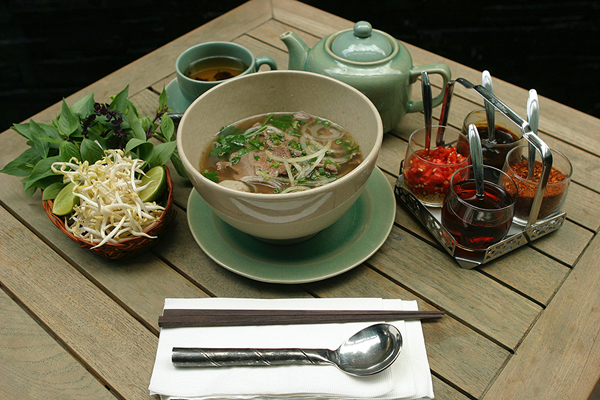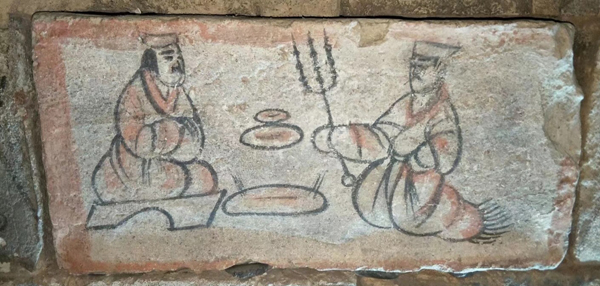Eight things to know about Chinese chopsticks 关于中国筷子的8件事

Chinese people use chopsticks to eat noodles. [Photo/Unsplash]
Chopsticks are two identical sticks used for eating (筷子是一对用来吃饭的细长条棍, kuài zi shì yī duì yòng lái chī fàn de xì cháng tiáo gùn). They were first used in China (最初在中国使用, zuì chū zài zhōng guó shǐ yòng) and then introduced to other areas in the world (后传至世界其他地区, hòu chuán zhì shì jiè qí tā dì qū). Chopsticks are considered quintessential utilities in Chinese culture (中国国粹, zhōng guó guó cuì) and have the reputation of "Oriental Civilization (东方文明, dōng fāng wén míng)". Below are eight things to know about Chinese chopsticks.
1. When were chopsticks invented? (筷子是什么时候发明的, kuài zi shì shén me shí hou fā míng de)
Before the invention of chopsticks, Chinese people used their hands to eat, but how did they eat soup and porridge? They had to use sticks. Chinese people started to use chopsticks about 3,000 years ago in the Shang Dynasty (c.16th to 11th century BC) (从大约3000年前的商朝开始,中国人开始使用筷子 cóng dà yuē sān qiān nián qián de shāng cháo kāi shǐ , zhōng guó rén kāi shǐ shǐ yòng kuài zi). According to the "Records of the Grand Historian (《史记》, shǐ jì)", the king of Zhou, the last king of the Shang Dynasty already used ivory chopsticks (象牙筷子)". On this basis, China has at least 3,000 years of history. During the Pre-Qin period (pre-221 BC), (先秦时期, xiān qín shí qī) chopsticks were called "Jia", and during the Qin (221-206 BC) and Han (206 BC-AD 220) dynasties they were called "Zhu" (筷子在先秦时代称为“梜”,汉代时已称“箸”,明代开始称“筷” kuài zi zài xiān qín shí dài chēng wéi "jiā", hàn dài shí yǐ chēng "zhù", míng dài kāi shǐ chēng "kuài"). Because "Zhu" shares the same sound as"stop" in Chinese, which is an unlucky word, people began to call it "Kuai", meaning "fast" in Chinese. This is the origin of today's name of Chinese chopsticks.
2. Who invented chopsticks? (谁发明了筷子, shuí fā míng le kuài zi)

A mural painted on a brick from a tomb cluster. The murals were found in a tomb of the Wei and Jin dynasties (220-419) in the Hexi Corridor of Gansu province. It is said to be the world's largest underground gallery. [Photo/chinadaily.com.cn]
Records of using chopstick have been found in many written books but lack physical evidence. However, there are many tales about the invention of chopsticks. One says that Jiang Ziya (姜子牙, jiāng zǐ yá), an ancient Chinese military strategist (中国古代军事家、韬略家, zhōng guó gǔ dài jūn shì jiā、tāo lüè jiā) created chopsticks after being inspired by a mythical bird. Another tale says Daji (妲己, dá jǐ), the favorite consort of the king of Zhou, invented chopsticks to please the king. There is another myth that Yu the Great (大禹, dà yǔ), a legendary ruler in ancient China, used sticks to pick up hot food to save time for controlling floods (为节约时间治水以树枝捞取热食, wèi jié yuē shí jiān zhì shuǐ yǐ shù zhī lāo qǔ rè shí). But there is no exact history record (史无记载, shǐ wú jì zǎi) about who invented chopsticks; we only know that some smart ancient Chinese person invented chopsticks.
3. What are chopsticks made of? (筷子由什么材料制成, kuài zi yóu shén me cái liào zhì chéng)
Chopsticks are made from many different materials such as bamboo, wood, plastic, porcelain, silver, bronze, ivory, jade, bone and stone (竹子、木头、塑料、瓷器、银、青铜、象牙、玉石、骨头和石头 zhú zi、mù tou、sù liào、cí qì、yín、qīng tóng、xiàng yá、yù shí、gǔ tou hé shí tou). Bamboo chopsticks (竹筷, zhú kuài) are most frequently used in Chinese people’s daily life.
4. How to use chopsticks? (如何使用中国筷子, rú hé shǐ yòng zhōng guó kuài zi)
Using two slim sticks to pick up food is not difficult. You can do it as long as you take the time to practice. Many foreigners in China have mastered the use of chopsticks like the locals. The key to using chopsticks is keeping one chopstick in position while pivoting the other one to pick up food. After a bit of patient practice, you’ll know how to eat with chopsticks very quickly.
5. Chopsticks etiquette (筷子礼仪, kuài zi lǐ yí)
Chopsticks are usually held in the right hand but it depends on your comfort if you are left-handed. Playing with chopsticks is considered to be bad manners. It is polite and thoughtful to pick up food for the elderly and children. When eating with elders, Chinese people usually let the elders pick up the chopsticks before anyone else (和长辈一起吃饭时,中国人通常会等长辈先动筷子, hé zhǎng bèi yī qǐ chī fàn shí , zhōng guó rén tōng cháng huì děng zhǎng bèi xiān dòng kuài zi). Often, a caring host will transfer a piece of food from the serving plate to a visitor's plate. It is impolite to tap chopsticks on the edge of one's bowl, because in ancient China beggars often used it to attract attention (吃饭的时候用筷子敲碗是不礼貌的,因为用筷子敲碗是过去乞丐在乞讨的时候引起人注意时所用的方法 chī fàn de shí hou yòng kuài zi qiāo wǎn shì bù lǐ mào de , yīn wèi yòng kuài zi qiāo wǎn shì guò qù qǐ gài zài qǐ tǎo de shí hou yǐn qǐ rén zhù yì shí suǒ yòng de fāng fǎ).
6. The philosophy of chopsticks (中国筷子哲学, zhōng guó kuài zi zhé xué)
Chinese philosopher Confucius (中国古代思想家孔子, zhōng guó gǔ dài sī xiǎng jiā kǒng zǐ) (551-479BC) advised people to use chopsticks instead of knives (刀, dāo) because metal knives remind people of cold weapons (冷兵器, lěng bīng qì), which mean killing and violence (杀戮和暴力, shā lù hé bào lì). He suggested banning knives at the dining table and using wooden chopsticks.
7. When were chopsticks introduced to other countries? (筷子何时传到其他国家, kuài zi hé shí chuán dào qí tā guó jiā)
Chopsticks were introduced to many other neighbor countries due to their lightness and convenience. Chopsticks were introduced into the Korean peninsula from China in the Han Dynasty (筷子在汉朝从中国传入朝鲜半岛, kuài zi zài hàn cháo cóng zhōng guó chuán rù cháo xiǎn bàn dǎo) and expanded to the entire peninsula in about AD 600. Chopsticks were brought into Japan by a Buddhist monk named Konghai from China's Tang Dynasty (618-907) (筷子由日本佛教僧侣空海和尚在唐朝时期带回日本, kuài zi yóu rì běn fó jiào sēng lǚ kōng hǎi hé shàng zài táng cháo shí qī dài huí rì běn). Konghai once said during his missionary work "Those using chopsticks will be saved", and therefore chopsticks spread in Japan soon after. After the Ming (1368-1644) and Qing (1644-1911) dynasties, chopsticks were gradually brought to Malaysia, Singapore, and other Southeast Asian countries (明清以后,筷子逐渐传入马来西亚、新加坡等东南亚国家, míng qīng yǐ hòu , kuài zi zhú jiàn chuán rù mǎ lái xī yà、xīn jiā pō děng dōng nán yà guó jiā).
8. Shanghai has a chopstick-themed museum (上海筷子主题博物馆, shàng hǎi kuài zi zhǔ tí bó wù guǎn)
If you are truly interested in chopsticks, you can pay a visit to the Shanghai Chopsticks Museum (上海民间民俗筷箸馆, shàng hǎi mín jiān mín sú kuài zhù guǎn). The museum has gathered more than 1,200 pairs of chopsticks from China, Korea, Japan, and Thailand. The oldest pair is from the Tang Dynasty.
Address: No 191 Duolun Road, Hongkou district, Shanghai
Entrance fee: Free
Opening Hours: Daily, 9 am-6 pm
Tel: 021-56717528
Transport: Take subway line 3 and line 8 to the Hongkou football stadium station; bus No 21, 597, 939, 854, 962, 47.

